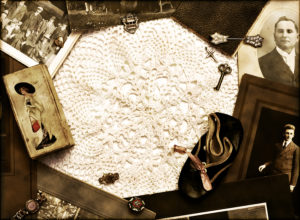Can I Protect My Estate with Life Insurance?

With proper planning, insurance money can pay expenses, such as estate tax and keep other assets intact, says FedWeek’s article entitled “Protect Your Estate With Life Insurance.”
The article provides the story of “Bill” as an example. He dies and leaves a large estate to his daughter Julia. There are significant estate taxes due. However, most of Bill’s assets are tied up in real estate and an IRA. Julia may not want to hurry into a forced sale of the real estate. If she taps the inherited IRA to raise cash, she’ll be forced to pay income tax on the withdrawal and lose a valuable opportunity for extended tax deferral.
A wise move for Bill would be to purchase life insurance on his own life. The policy’s proceeds could be used to pay the estate tax bill. Julia will then be able to keep the real estate, while taking only the Required Minimum Distributions (RMDs) from the inherited IRA. It might make sense if Julia owns the insurance policy or it’s owned by a trust as well. See here for more details on how that might work for you. https://galligan-law.com/trust-owned-life-insurance-in-your-estate-plan/
However, there are a few common life insurance errors that can damage an estate plan:
Designating the estate as beneficiary. If you make this move, you put the policy proceeds in your estate, where the money will be exposed to estate tax and your creditors. Your executor will also have additional paperwork, if your estate is the beneficiary. Instead, be certain to name the appropriate beneficiaries.
Designating a single beneficiary. Name at least two “backup” or contingency beneficiaries. This will eliminate some confusion in the event the primary beneficiary should predecease you.
Designating your revocable trust. If estate taxes aren’t a concern and you use a trust-based estate plan, sometimes designating your trust as a beneficiary is a great idea as it provides liquidity to your family for estate expenses.
Placing your life insurance in the “file and forget” file. Be sure to review your policies at least once every three years. If the beneficiary is an ex-spouse or someone who has passed away, you need to make the appropriate change and get a confirmation, in writing, from your life insurance company.
Inadequate insurance. You may not have enough life insurance. If you have a young child, it may require hundreds of thousands of dollars to pay all of his or her expenses, such as college tuition and expenses, in the event of your untimely death. Skimping on insurance may hurt your surviving family. You also don’t need to be so thrifty, because today’s term insurance costs are very low.
As you can see, life insurance may be a powerful estate tool. Speak with your advisor and your estate planning attorney on how best to incorporate life insurance in your estate plan.
Reference: FedWeek (June 11, 2020) “Protect Your Estate With Life Insurance”

